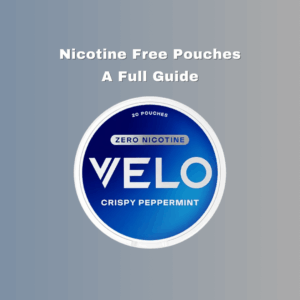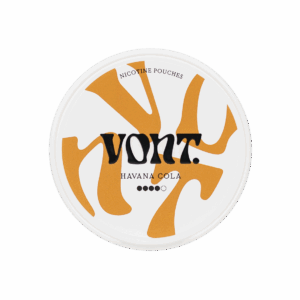Nicotine Free Pouches – A Full Guide
Introduction
Oral pouches have quickly become a significant segment of the smokeless products market. According to the U.S. Centers for Disease Control and Prevention (CDC) and tobacco researchers, nicotine pouch sales in the United States grew from around six million units in 2016 to over 334 million units by 2023. This explosive growth is tied to increasing regulation of cigarettes and vapes and the marketing of pouches as discreet alternatives. At the same time, many consumers are looking for ways to enjoy the ritual of a small oral pouch without ingesting nicotine at all. Interestingly, some nicotine free pouches even draw inspiration from Swedish candy, offering sweet, fruity flavours reminiscent of Scandinavian treats. These nicotine free pouches – also called zero-nicotine or herbal pouches – aim to provide the same oral experience using plant fibres, herbs, caffeine or vitamins instead of nicotine.
In this guide we explain what nicotine-free pouches are, compare them with tobacco-free nicotine pouches, examine safety considerations, and explore newer energy and nootropic pouch products.
Read our guide: What Is Swedish Candy
What are nicotine free pouches?
Definition and ingredients
Nicotine free pouches are small fibre pouches designed to be placed between the lip and gum. Unlike traditional snus, which many people still buy snus online for its classic flavour and nicotine content, these pouches contain no nicotine or tobacco. Instead, the pouch material is typically a blend of plant-based fibres and flavourings such as mint, fruit essences or sweeteners. Some formulations incorporate caffeine or herbal extracts to provide a mild stimulation, while others focus purely on flavour and oral satisfaction.
Because nicotine free pouches do not deliver nicotine, they are not classed as tobacco products and usually fall outside tobacco regulations. Manufacturers therefore emphasise that these pouches can offer the sensory ritual of an oral pouch without the addictive substance.
Read our guide: What Is Snus
Typical ingredients include:
- Cellulose or plant fibres for structure
- Flavourings and sweeteners (menthol, peppermint, berry, citrus, dessert flavours)
- Herbal extracts like chamomile or green tea
- Caffeine or vitamins for stimulation (in specific product lines)
Read our guide: What Is ZYN Used For?
Why choose nicotine free pouches?
People choose nicotine free pouches for a variety of reasons:
- Smoking or nicotine cessation: Some users are reducing their nicotine dependence and appreciate the ritual of having a pouch under the lip without consuming nicotine. Removing nicotine from the product eliminates addiction risk.
- Discrete oral satisfaction: Nicotine-free pouches are small, odourless and produce no smoke or vapour. They can be used discreetly in places where smoking or vaping is prohibited.
- Avoiding tobacco-derived chemicals: Unlike tobacco-free nicotine pouches, nicotine free versions do not contain nicotine salts or tobacco-derived chemicals. By eliminating nicotine and tobacco, zero-nicotine pouches reduce exposure to carcinogens and additives.
Read our guide: ALP Vs ZYN
Safety considerations for nicotine free pouches
Nicotine free pouches are generally considered safer than nicotine products because they avoid nicotine addiction and many tobacco-derived chemicals. However, consumers should still check ingredient lists for sweeteners, artificial flavourings and caffeine content. Overuse of stimulant ingredients, particularly caffeine, can have side effects such as anxiety, rapid heart rate and high blood pressure.
While these figures apply to caffeine-specific pouches, they illustrate that even “herbal” pouches with active ingredients should be used responsibly.
Read our guide: Where Is ZYN Made?
Tobacco-free nicotine pouches
What are tobacco-free nicotine pouches?
Tobacco-free nicotine pouches are smokeless products that deliver nicotine extracted from tobacco or created synthetically. They come in multiple flavours and strengths and are often marketed as discreet, spit-free alternatives to cigarettes, chewing tobacco and vaping. Because they contain nicotine but no tobacco leaf, manufacturers market them as “tobacco-free.”
Popularity and regulatory status
Nicotine pouch sales have exploded since 2016, growing from 6 million to 334 million units by 2023. This growth coincides with increased regulation of cigarettes and vaping, leading some consumers to shift toward pouches. Major pouch brands have submitted applications to the U.S. Food and Drug Administration for marketing authorization, but most remain temporarily on the market while awaiting regulatory decisions.
Potential health risks
Nicotine is highly addictive; the U.S. Surgeon General has compared its addictiveness to heroin. Studies have found cancer-causing chemicals such as ammonia, chromium, formaldehyde and nickel in more than half of sampled pouch products.
Even though the pouches are tobacco-free, they still deliver nicotine salt to reduce throat irritation. Health risks include cardiovascular and respiratory issues, and nicotine can affect adolescent brain development. Youth use is increasing: in 2024, 480,000 youth in the U.S. reported using nicotine pouches, with 73 % of those continuing to use them. Another 2024 survey found that 1.8 % of middle and high school students were current users.
Discrete packaging and flavours contribute to youth appeal — highlighting why nicotine-free alternatives may be desirable for adults seeking oral pouches without contributing to youth nicotine use.
Comparison with nicotine free pouches
Unlike nicotine free pouches, tobacco-free nicotine pouches deliver an addictive substance and may contain harmful chemicals. While they provide a similar discrete experience, the presence of nicotine means users remain exposed to addiction and potential health risks.
Zero-nicotine pouches eliminate those risks, though they cannot help manage withdrawal symptoms in individuals seeking to quit nicotine. People using pouches as part of a cessation plan should consider professional guidance and evidence-based cessation aids.
Read our guide:
Alternatives: caffeine and nootropic pouches
Nicotine free pouches are not the only alternative. New categories such as caffeine pouches and nootropic pouches offer energy boosts or cognitive benefits without nicotine.
Caffeine pouches
Caffeine pouches resemble nicotine pouches but use caffeine as the active ingredient. Each caffeine pouch can deliver between 25 mg and 200 mg of caffeine, absorbed quickly through the mouth. Popular flavours include gummy bear, sour cherry, cola and peach iced tea.
Because caffeine pouches are often marketed to teenagers and sold online and in gas stations, experts urge caution: overuse can cause anxiety, heart palpitations, high blood pressure and insomnia. Teens are advised to limit daily caffeine intake to 100 mg or less, and products should be stored out of reach of children.
Caffeine pouches can provide a convenient, smokeless energy boost without sugar or the volume of an energy drink. However, they are not regulated like medicines; users should start with low doses and monitor their body’s response.
Nootropic pouches
Nootropic pouches contain supplements aimed at enhancing focus, memory or mood. Common ingredients include caffeine, L-theanine, Ginkgo biloba, Rhodiola rosea, B-vitamins and adaptogens.
While they may appeal to students and professionals seeking mental clarity, scientific evidence for many nootropics is limited. Consumers should research each ingredient, check for medication interactions, and follow dosage guidelines.
Read our guide:
Balancing benefits and risks
Energy and nootropic pouches show how the pouch format can deliver various substances. Compared with nicotine pouches, caffeine and nootropic options avoid nicotine addiction but introduce other considerations. Caffeine can overstimulate the nervous system if consumed in high doses, while nootropics may lack robust safety data.
For those seeking a simple oral habit without stimulants, unflavoured or lightly flavoured nicotine free pouches remain the safest option. Always choose reputable brands, read labels carefully and consult a healthcare professional if unsure.
Summary
Nicotine free pouches have emerged as a healthier alternative to tobacco-free nicotine pouches. While nicotine pouch sales have skyrocketed—growing from 6 million in 2016 to 334 million units by 2023—concerns about addiction and chemical exposure remain. Popular brands such as ZYN & VELO have helped define the category with their wide range of ZYN Flavors, though many consumers are now seeking similar oral satisfaction without the nicotine.
Nicotine free pouches, by contrast, are completely tobacco- and nicotine-free. They offer the same convenient format as nicotine pouches like ZYN but rely on plant fibres, flavours and sometimes mild stimulants like caffeine. When selecting nicotine free pouches, consumers should check ingredients, moderate their use and be aware of potential stimulants.
Caffeine pouches can contain up to 200 mg of caffeine per pouch and may cause heart palpitations or high blood pressure if overused. Nootropic pouches promise cognitive benefits but rely on supplements whose efficacy and safety are still being studied.
For individuals seeking to quit smoking or vaping, nicotine free pouches may provide a comforting oral habit without perpetuating nicotine dependence. They can be a useful complement for those transitioning away from nicotine products like ZYN, especially when combined with counselling or approved nicotine replacement therapies.





